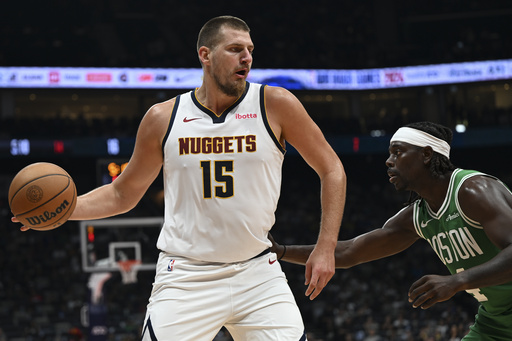It was only moments after Denver’s journey as NBA champions ended last spring that the Minnesota Timberwolves were reveling in their victory. Their loud celebrations could be heard through the walls as Nuggets coach Michael Malone sat somberly in his final postgame press conference of the season.
At that moment, it became clear: another season had passed without a team experiencing the challenge of back-to-back championships, leading Malone to express a realization that has become increasingly apparent.
“It is hard. It is hard. It is hard to repeat,” Malone remarked. “It’s hard to win.”
Indeed, his statement holds true. NBA history has witnessed no time more challenging for teams striving to repeat their success.
In the past six seasons, different franchises have claimed the championship title: Toronto, the Los Angeles Lakers, Milwaukee, Golden State, Denver, and now Boston. This streak of six distinct champion teams reflects a rare parity in the league, reminiscent of a similar phase observed nearly fifty years ago.
Currently, it seems that the era of dynasties is on pause, making room for a competitive landscape where reaching the pinnacle of the NBA is significantly more challenging due to various factors. The Celtics now have the opportunity to disrupt this pattern.
“It’s always hard to win one,” Boston guard Jrue Holiday stated, who previously won a title with Milwaukee in 2021 and was part of the Bucks team eliminated in the second round the following season. “But then to win back-to-back is even harder.”
The NBA appears to embrace this trend. We are now in what can be termed the Parity Era, where the new collective bargaining agreement is expected to further hinder the prospects of teams establishing dynasties—a sharp contrast to the four-year stretch from 2015 to 2018 when Cleveland and Golden State dominated the finals.
To put it simply, the increasing team expenditures have made making trades more complicated, particularly when involving high-salaried players. The latest collective bargaining agreement, implemented last year, introduced two luxury tax aprons. Exceeding the first apron restricts roster flexibility, while surpassing the second one results in more severe limitations. One could argue that there have not been as significant rule changes since the adjustment of lottery odds and the introduction of a play-in tournament aimed at reducing tanking strategies.
A recent example of these complexities arose when the Timberwolves and the Knicks took several days to finalize a deal involving Karl-Anthony Towns moving to New York, along with Julius Randle and Donte DiVencenzo heading to Minnesota. The negotiations took time due to the requirement for precise financial details.
Indeed, the NBA’s intention appears clear.
“I don’t want to say nothing is lost, but to me, I don’t think our system, by definition, will prevent repeat championships,” NBA Commissioner Adam Silver explained. “I think that, yes, it makes it less likely, but we didn’t set out to say, ‘Let’s make sure there’s a different champion every year.’ Our focus is on providing equality of opportunity. However, I also think there are strong incentives for players to remain in their respective markets.”
While it wouldn’t be accurate to claim all 30 teams enter the season with a realistic shot at the title, there is a greater number of legitimate contenders than in previous seasons. Last year alone, twelve teams carried championship odds of 25-1 or lower, compared to just three teams at the height of the Warriors-Cavs rivalry six years ago.
“The league’s looking for parity,” noted Washington general manager Will Dawkins. “Flattening the lottery odds, implementing the second apron, all of these changes are designed to support that objective.”
It is noteworthy that none of the preceding five championship teams, not counting the current Celtics, who are favored by many to win this season, returned to the finals the following year. This marks a long-standing occurrence in NBA history, echoing the same fate faced by champions from 1973 to 1977, including the likes of New York, Boston, Golden State, and Portland, all of whom were defeated in the conference finals or earlier.
Just a few years ago, most teams likely felt they had little chance of winning the title. However, the landscape is markedly different now.
“I just think all of it is setting up to be more competitive, with more teams vying for the title,” Miami coach Erik Spoelstra expressed. “That’s when the excitement builds—the minimal disparities between teams. It will be intriguing to see how teams handle the varying emotions and competition throughout the season. It certainly can get uncomfortable, but I find it exhilarating. It’s fantastic for the league, great for viewership, and ultimately what fans desire.”


